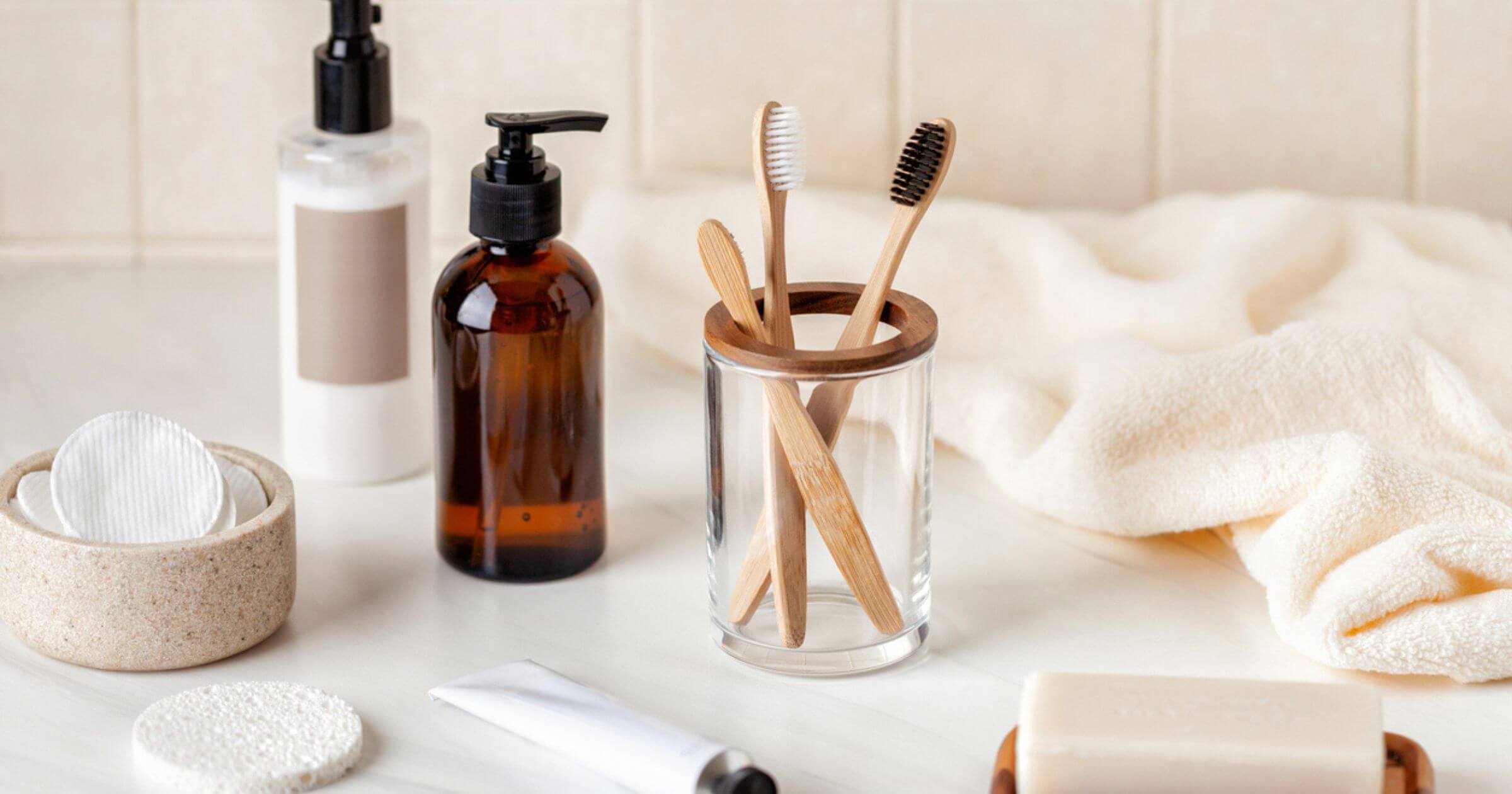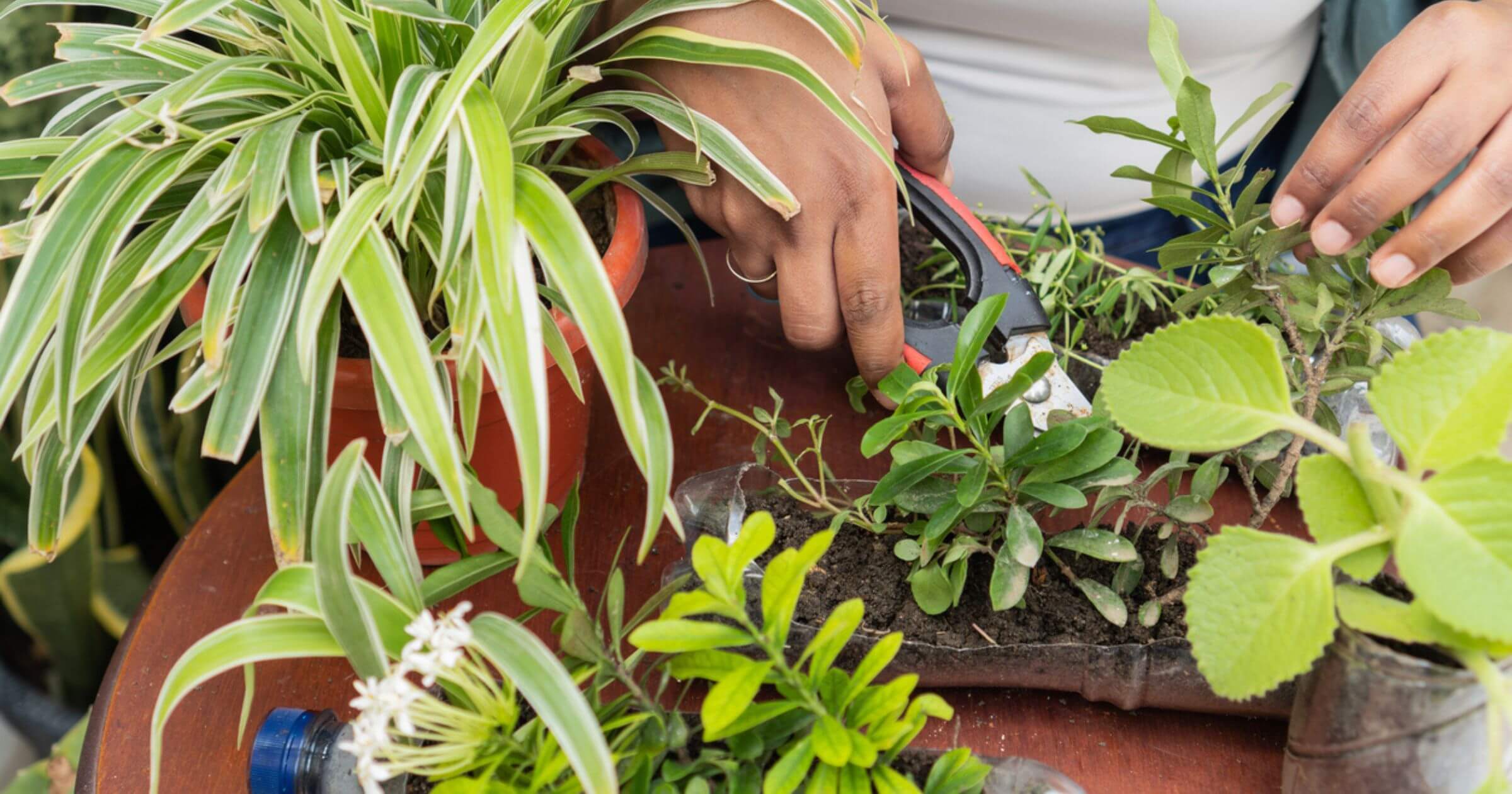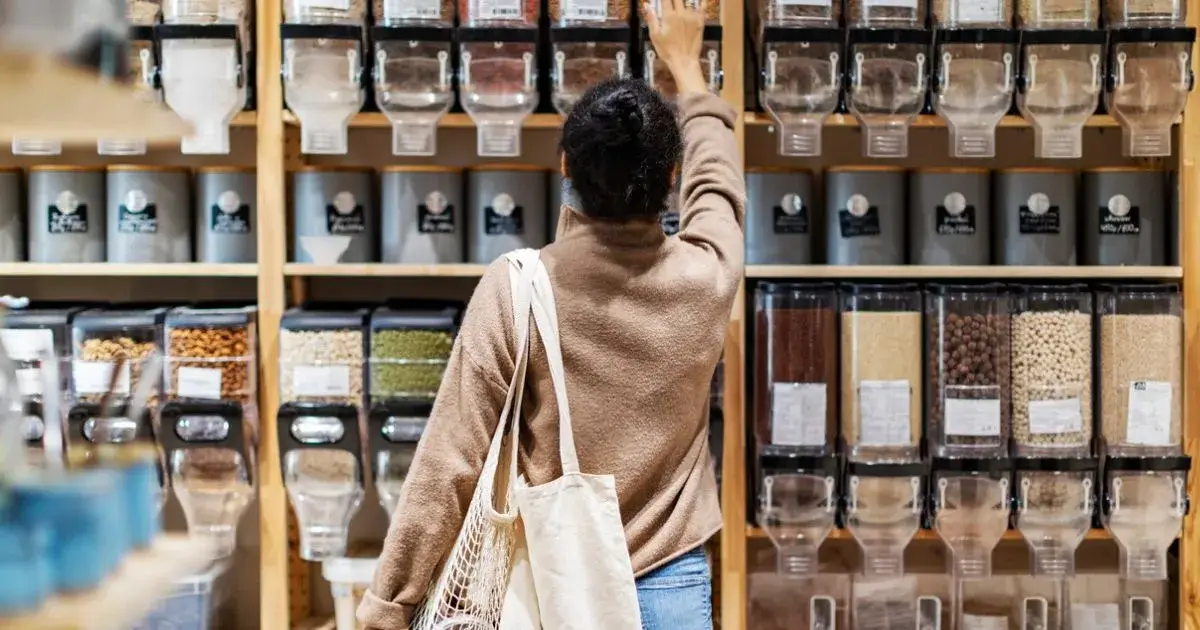
Tamara Davison
Tamara Davison is a journalist who specializes in sustainability and the environment. Reporting from around the world, she's seen firsthand the direct impact waste is having on coastal communities and our oceans. As a diver trained in ecological monitoring, the changes Tamara has seen in marine habitats inspired her to action. She's previously written for The Guardian, The Independent and the Evening Standard. She's also produced environmental documentaries for EuroNews.
Households in the UK throw away around 100 billion pieces of plastic packaging each year, according to a 2022 Greenpeace report. Alarmingly, only 12% of this single-use plastic ends up in a recycling plant. An even smaller percentage of it will actually get recycled.
Businesses package most food, cleaning products, and toiletries in single-use plastic, meaning you’ll find it in every part of your home. The BBC documentary War on Plastic highlighted the severity of the plastic situation in 2019, after counting a total of 7,145 plastic items in kitchens on just one residential street.
It’s time for things to change. Luckily, we can implement strategies in our homes to reduce unnecessary waste. From rethinking your purchasing habits to buying reusable materials, here are some ways to make a positive impact at home.
At CleanHub, we help brands improve their environmental impact and reduce plastic waste. Want to know which brands are working with us to help our planet? Check out our brand directory to see the businesses committed to tackling plastic waste with us.
What’s on this page?
01 | Reducing plastic in the kitchen02 | Ways to reduce plastic in the bathroom
03 | How to reduce plastic in your bedroom
04 | Reducing plastic on the go
05 | How much plastic waste do households consume?
06 | What can you do with plastic waste at home?
07 | Summary
Reducing plastic in the kitchen
Kitchens contain some of the highest levels of single-use plastic in the home, with most of it coming from food packaging, cleaning products, and storage containers. The problem is that most of this plastic will end up in landfills or polluting our oceans.
Here are some easy ways to reduce the amount of plastic in your kitchen.
1. Bulk buy ingredients
Buying ingredients in bulk can dramatically reduce the amount of plastic waste that will end up in landfills — it’s also more cost-effective.
When you buy in bulk (or make larger purchases), you use less packaging as opposed to buying multiple smaller products. Some stores are packaging-free too, so you can fill up your containers and reduce waste altogether.
Bulk-product stores and online shops provide a variety of food and cleaning products for large purchases. A recent report found that packaging-free shops in the EU actually saved over 5,500 tonnes of plastic packaging waste.
2. Swap out plastic wrap
Plastic wrap, often used to protect leftover food or opened products, is hard to recycle. Yet, it’s also alarmingly prevalent in our kitchens. In fact, one study found that around 80 million Americans used at least one roll of plastic wrap in just six months. Learn more about recycling in the US by visiting our page The American Recycling System Explained.
But there are plenty of eco-friendly alternatives to plastic wrap out there, including Beeswax wraps, plant-based wax wraps, silicone lids, and cotton mesh bags.
All these alternatives are affordable and sustainable, and keep your ingredients fresh.
3. Store food in old jars
Switching to old glass jars instead of plastic storage containers is a great way to reduce plastic and keep food safe.
Glass jars are effective at keeping air out, meaning your produce can stay fresher for longer and is less likely to get contaminated. It’s also been proven that food absorbs chemicals more easily from plastic and paper, compared to glass or ceramic.
4. Ditch the kitchen sponge
Residents in the US alone are estimated to discard about 400 million kitchen sponges each year. The majority of these are made from plastic and aren’t biodegradable.
Thankfully, environmentally friendly alternatives exist and are often made from natural ingredients such as coconut coir. You can also buy cotton scrubbers that biodegrade much quicker than cheap plastic ones.
These sustainable sponges, made from organic and natural fibers, are great because they don’t release microplastics into the ocean or harm marine wildlife when thrown away.
5. Reconsider what to do with your trash
In the UK, roughly 14 million tonnes of trash is still sent to landfill each year, despite many councils providing households with recycling bins. Both the authorities and individual households have a responsibility to support recycling — so start asking yourself if there’s an alternative to throwing things away.
Apps like Geev allow households to re-sell or give away old belongings instead of sending them to landfills. This includes unused food, old clothes, and many household products and appliances.
On top of that, you can repurpose most plastic packaging into DIY household products, such as bird feeders or gardening pots. Remember, there are many alternatives to turn to instead of throwing your plastic straight into the trash.
6. Cut down on takeaways
In 2021, The Guardian reported that takeaway containers were the largest source of the ocean's plastic pollution. So, reducing takeout orders can help to keep our oceans clean.
Cooking at home is not only proven to be healthier, but it’s also better for the environment. By cooking at home (preferably after bulk buying ingredients), you reduce unnecessary plastic waste from takeaway containers.
If you can’t cut down on takeaway deliveries, consider supporting businesses that champion more environmentally friendly deliveries by having paper wrappers and bags.

Ways to reduce plastic in the bathroom
Bathrooms reportedly contain around 64% of a home's single-use plastic. Even if they’re recyclable, many bathroom products will end up in landfill. Here’s how we can change that.
7. Use refillable products
Around 30,000 tonnes of bathroom waste goes to landfills each year. To combat this, refillable bathroom and cosmetic products are growing in popularity and can help you reduce your single-use plastic consumption.
These businesses usually sell refills at lower prices, encouraging you to keep the original container. The Good Fill, for example, provides basic bathroom and kitchen supplies in refillable pouches.
Lush also encourages customers to recycle by offering a ‘bring it back’ scheme that gives customers discounts and free products for reusing tubs.
8. Buy natural products
Nine out of ten cosmetic products reportedly contain microplastics. Plastic polymers found in your bathroom products can be harmful to the skin and also negatively impact the environment when washed down the drain.
Microplastics are deliberately added to many products, including deodorants, exfoliants, shampoo, shower gel, and shaving cream. These plastics tend to help condition, exfoliate, or act as an emulsifier.
By switching to natural products, you can instantly reduce the amount of plastic you’re putting into the environment. Look for a logo on products that says ‘Zero Plastic Inside’ and avoid anything that contains glitter.
9. Buy a bamboo toothbrush
At least one billion plastic toothbrushes are thrown away in the US annually, and most are difficult to recycle. To avoid this buildup of plastic, many people are switching to bamboo toothbrushes, which are much kinder to the planet.
Because bamboo forests are fast-growing, and often release more oxygen than other trees, these products are usually sourced ethically.
Most bamboo products are plastic-free, biodegradable, and compostable within six months —vso they won’t go on to pollute our oceans.
10. Support eco-friendly brands
One of the best ways to reduce plastic waste in your bathroom is by buying from eco-friendly brands. Choose brands that champion recycled plastic or alternative packaging materials.
If you’re worried about companies greenwashing, it’s a good idea to look into products that feature recognized labels, such as the FSC, B Corp, and Leaping Bunny logos.
Want to discover which brands are working to reduce plastic pollution around our planet? CleanHub has created a brand directory to help you connect with businesses that care about making a difference.
11. Prioritize reusable products
Many manufacturers design bathroom products for single use, meaning consumers simply throw them away afterward. Several decades ago, people commonly reused and repaired products — and this is something we should try to revive.
Opting for reusable items might cost more upfront, but allows for multiple uses, so you cut down the long-term costs. Reusable items also cut down on the need for new materials and reduce waste going to landfill. Take disposable razors, for example.
Instead of looking for cheap, throwaway bathroom products, invest in something you’ll use for longer. Reusable products reduce waste and also save money in the long run.
12. Avoid single-use wet wipes
Most wet wipes and makeup wipes are made from synthetic materials that aren't biodegradable. In 2022, studies found that a build-up of non-disposable wet wipes in London’s River Thames had actually changed the course of the river. Even biodegradable wipes are troubling because they might release pollutants when they break down.
The best alternative is to ditch wet wipes for reusable cotton alternatives. All you need to do is use the cloth as you would with a wet wipe, wash it once you're done, and it'll be ready to use again.

Tackling single-use plastic in other areas of your home
You’ll probably find the highest amounts of single-use plastic products in a kitchen or bathroom. However, don't overlook the importance of reducing plastic use in other areas of your home as well.
13. Make natural garden products
Some garden products, such as plant food, fertilizers, and weed killers, come in single-use plastic containers and bags. To avoid this plastic waste, why don’t you look into making your garden products from natural ingredients?
Homemade herbicides and natural plant food are both easy to rustle up from a few simple ingredients. It requires less packaging, and its contents are kinder to your garden and wildlife.
There are also other ways to cut back on plastic in the garden, such as:
- Reusing plastic kitchen items for sowing pots
- Creating bird feeders from old plastic bottles
- Upcycling old bins into water butts
- Buying secondhand gardening products instead of new ones
14. Create a greener wardrobe
Washing synthetic clothes releases an average of 500,000 tons of plastic microfibers into our oceans each year. While you don’t get much single-use plastic in your wardrobe, it’s worth noting that polyester, nylon, and acrylic are types of plastic used in fashion — and these items can impact the environment.
As well as the material that’s used in clothes, another key reason why fashion is wreaking havoc on the planet is the rate at which people are throwing away items.
Shoppers might be tempted to throw out old clothes and buy new ones, especially during campaigns like Black Friday. Instead, consider donating old clothes to your local clothes bank, charity shops, and thrift stores. And, buy from brands that create clothes from sustainable materials, like organic cotton, linen, or hemp.
15. Stop wasting home office supplies
Around 9 billion pens are thrown away each year around the world. Whether at work or home, office supplies are usually wasted.
But there are plenty of alternatives we can go for to avoid this pile-up of pens. Try investing in a pen made from bamboo or metal and keep your workspace sustainable.
16. Opt for reusable garage products
You can often find single-use plastic lurking in your garage. For example, many car-care products, like oil and cleaning supplies, use durable yet single-use plastic containers. To cut back on this plastic consumption, try bulk buying garage supplies.
Making small changes, such as buying a reusable cloth to clean your car, can also go a long way.
Reducing plastic on the go
The plastic issue also extends beyond household waste, with people often bringing additional plastic into their homes from outside activities. Here’s what you need to keep in mind to avoid this.
17. Ditch single-use plastic bags
When it comes to cutting back on waste, one of the most important things we can do is stop using single-use plastic bags.
It’s been estimated that around 100,000 marine animals will die each year because of plastic waste, with many of them mistaking plastic bags for prey.
Plastic bags are very hard to recycle and incredibly harmful to the environment and wildlife, so it’s best to stop using them altogether.
Although charging for plastic bags dramatically reduced their use across many countries, including the UK, our efforts to reduce plastic use shouldn't stop there. One key way you can do your bit is to simply carry around a tote bag, even when you don’t expect to buy anything.
18. Carry a refillable bottle
On average, Americans throw away 25 billion non-recyclable styrofoam coffee cups each year.
Thankfully, as more people try to cut their plastic consumption, many companies have started to sell reusable drink flasks that keep your drinks warm or cool, and your body hydrated.
By filling up a reusable bottle with water or hot drinks like coffee, you can reduce the number of unnecessary plastic bottles and cups in circulation. It also works the other way around — many coffee shops can fill your flask instead of wasting another cup.
19. Use a lunch box
Swap plastic sandwich bags for a durable lunchbox to make your lunch prep better for the environment.
EcoLunchBox and HyrdoFlask are examples of businesses that offer lunch boxes made from sustainable materials that keep your food fresh and your environmental footprint down.
How much plastic waste do households consume?
In 2022, Big Plastic Count revealed that each UK household threw away an average of 66 plastic items each week, totaling approximately 96.57 billion pieces annually. The Guardian similarly found that, in 2021, 95% of US household waste ended up in landfills or our oceans.
As you can see, this is a worldwide problem.
Challenges also exist when it comes to monitoring global household plastic waste. While the UK and the US have recycling processes in place, many developing countries lack infrastructure for home recycling.
What can you do with plastic waste at home?
We know that eliminating all plastic waste at home is challenging. What’s more, most plastic products are only recyclable a certain number of times. So, we need to think of new ways to repurpose and reuse plastic waste at home. A spot of DIY creativity comes into play.
Repurposing plastic bottles can help extend their life. For example, you can transform them into DIY bird feeders or garden irrigation systems. We’ve even seen old shampoo bottles turned into phone holders and plant pots.
By consciously thinking about the waste we generate as individuals, we can apply simple strategies for reducing our environmental footprint.
Summary
Reducing plastic waste in our homes is essential and it requires a collective responsibility. From your kitchen to your wardrobe, there are many opportunities to cut out single-use plastic.
However, the quest to reduce plastic in our homes can’t be achieved through one route. It requires mindful choices, sustainable purchases, and ongoing conversations with others to help inspire further action.
By re-evaluating household choices and taking action, we can make meaningful strides toward a waste-free future.
Do you want to support brands doing their bit for the environment? At CleanHub, we’re committed to helping brands improve their environmental impact. Our new brand directory helps connect you with businesses that have partnered with CleanHub to end ocean waste.



%20(1).webp?width=380&name=Summer%20(1)%20(1).webp)

.webp?width=380&name=Cosmetics%20(1).webp)
.webp?width=380&name=Refill-beauty-product%20(1).webp)
%20(1).webp?width=380&name=Clothes%20(1)%20(1).webp)

.webp?width=380&name=trash%20(1).webp)
.webp?width=380&name=Paper-packaging%20(1).webp)
.webp?width=380&name=Farming%20(1).webp)
